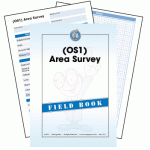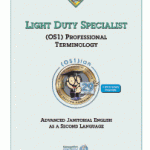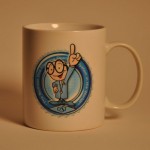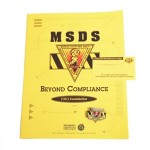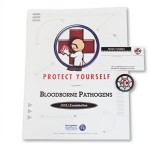Cleaning for Health at The University of Texas at Austin

A control cabinet at The University of Texas of Austin holds approximately three months of chemicals used to clean the buildings on campus.
[linkedin_share style=”none”][fbshare type=”button”][twitter style=”horizontal” float=”left”]
By Bobby Moddrell – Custodial Services Division
The University of Texas at Austin
For the past decade, the Custodial Services Division of The University of Texas at Austin has maintained over 12 million square feet of the campus using our (OS1) process. (OS1) promotes the standardization of the custodial operation through the use of environmentally friendly products, ergonomic tools, worker safety, strategically assigned workloads for each Full Time Equivalent Employee (FTE), and a robust training program. With this process, Custodial Services has maintained a consistent cleaning program across campus despite the size of the operation and the varying demands of each building.
The (OS1) process has also ushered in a sustainable approach to cleaning, that is easily reflected in our chemical program, water usage, paper and plastic products inventory, team cleaning system and indoor air quality. Prior to (OS1), UT Austin’s Custodial Services’ chemical program consisted of over 200 different chemicals which is fairly standard for most cleaning operations of this size. Since the implementation of (OS1), that number has been reduced almost 88%, a grand total of 25 chemicals. This reduction is due in large part to PortionPac, a company that provides environmentally responsible chemical concentrates which are packaged in individual pacs that are pre-measured for a specific container. By using one pac per bucket, bottle or tank of water [known in (OS1) as “the rule of one“], we realize a safer, more accurate use of chemicals, thus eliminating unnecessary waste and environmental pollution. Of our four daily use chemicals, three are Green Seal Certified and the daily germicide used to reduce pathogenic microorganisms is approved by the Environmental Protection Agency.
Subscribing to the (OS1) process has also decreased Custodial Services’ annual water usage by roughly 70%. While the effective measurement and use of chemicals contributes to this figure, it is the use of two-sided mop buckets and microfiber cloths that has had the greatest impact on water usage. Traditional mop buckets hold five gallons of water, but the two-side restroom and utility buckets used in our program hold 1.25 and 2 gallons of water respectively. Additionally, a two-sided mop bucket system keeps clean solution and contaminated water separate, thus ensuring the longevity of the cleaning solution and reducing cross contamination. The coordinated use of microfiber flat mops also helps conserve water.
Traditional string mops transfer more water than necessary to hard floor surfaces, making it difficult to clean and absorb the dirtied water effectively. Moreover, the fibers of a traditional string mop are incapable of trapping the microorganisms targeted in common cleaning procedures. Microfiber mops, however, absorb up to six times their own weight in liquid pick up and retention and their unique fibers have been shown to reduce bacteria up to 96%. The use of two-side mop buckets and microfiber mops have been instrumental in our decreased water usage. The switch alone has brought our estimated water usage from 863,340 gallons annually to 262,302 gallons for a savings of 601,038 gallons of water each year.
Custodial Services’ commitment to sustainability is reflected in the choice of paper and plastic products used across campus. Both our toilet paper and hand towels contain high percentages of recycled fiber and post-consumer content. Custodial Services has also made the switch to a more sustainable trash liner. These new liners are made from linear low density polyethylene (LLDPE) and meet the EPA’s Comprehensive Procurement guidelines. This means the liners’ post-consumer content can range from 10%-100%. All liners contain 100% post-consumer recycled resin. The liners have reduced our annual liner waste to landfills by an estimated 36%. Our previous liners contributed 220,459 pounds of waste annually, but the new liners will only contribute an estimated 141,847 pounds for a reduction of 78,612 pounds per year.
Through the daily maintenance of campus buildings, Custodial Services is doing its part to sustain the built environment. This effort not only prolongs the life of buildings and materials therein, but also improves the quality of life inside these buildings by all occupants. The Environmental Protect Agency (EPA) posits that individuals spend nearly 90% of their time indoors, whether at work, home or in transit. As such, it has become increasingly important to maintain an indoor environment free of pollutants. A recent study measured the indoor air quality of a building maintained with an average upright vacuum and found the level of pollutants equal to roughly twenty times what the EPA allows Americans to pollute from their cars. This is not surprising considering cloth filter bags on traditional upright vacuums only remove 30% of pollutants from the air. In an effort to improve indoor air quality, Custodial Services elected to use Super CoachVac backpack vacuums manufactured by ProTeam. These vacuums provide four-level filtration, removing 99.9% of lung-damaging particles.
Additionally, these vacuums help protect carpet, extending the life of carpet and reducing the need for replacement. It is this high level of carpet care and air purification that has earned the Pro Team Vacuum the Carpet Research Institute’s (CRI) green label certification.

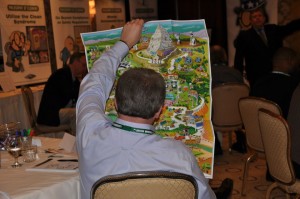
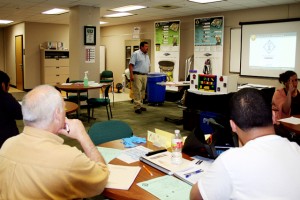
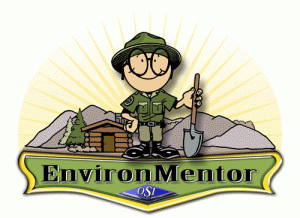
 Due to its advancements in quality assurance and sustainability standards, ManageMen (OS1) and two of its flagship programs earned ISO 9001 certification for Quality Management Systems and
Due to its advancements in quality assurance and sustainability standards, ManageMen (OS1) and two of its flagship programs earned ISO 9001 certification for Quality Management Systems and 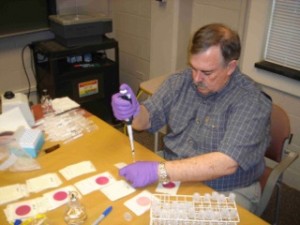
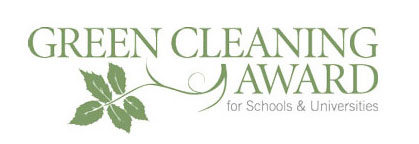
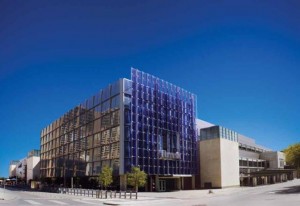 December 12, 2011. Austin, Texas – The Austin Convention Center is proud to announce that it has been awarded LEED® Gold Certification for Existing Buildings, established by the U.S. Green Building Council (USGBC) and verified by the Green Building Certification Institute (GBCI). The LEED (Leadership in Energy and Environmental Design) Green Building Rating System is the internationally accepted benchmark for the design, construction and operation of high performance green buildings, which was developed by the USGBC.
December 12, 2011. Austin, Texas – The Austin Convention Center is proud to announce that it has been awarded LEED® Gold Certification for Existing Buildings, established by the U.S. Green Building Council (USGBC) and verified by the Green Building Certification Institute (GBCI). The LEED (Leadership in Energy and Environmental Design) Green Building Rating System is the internationally accepted benchmark for the design, construction and operation of high performance green buildings, which was developed by the USGBC.